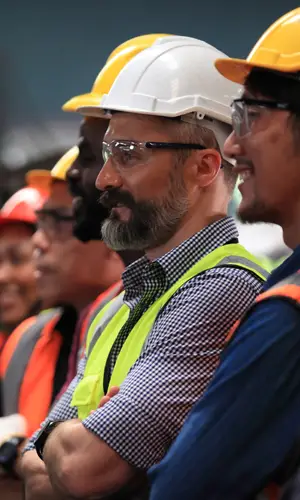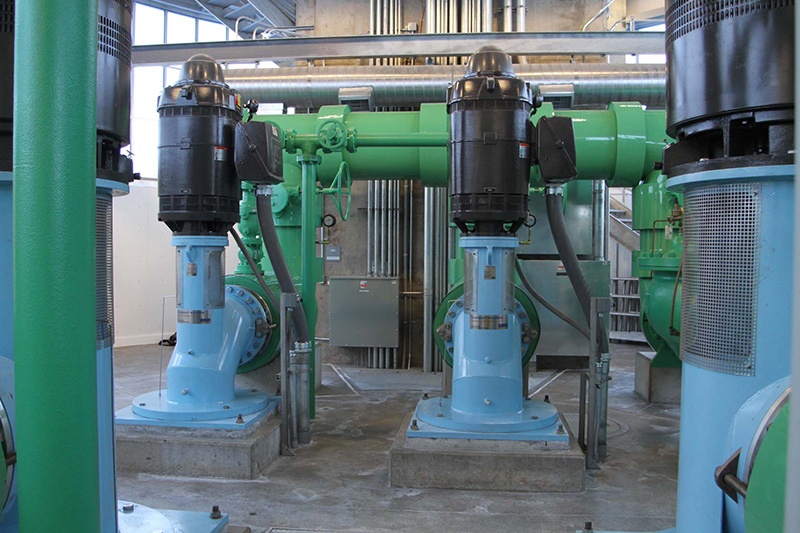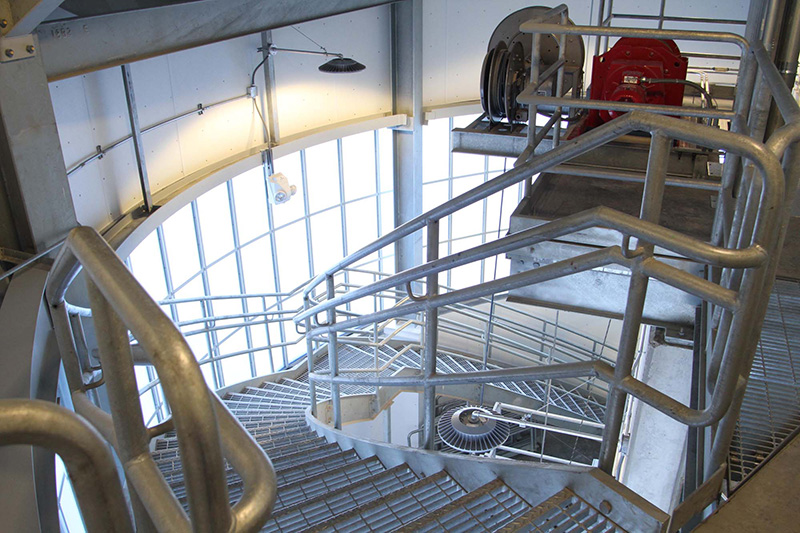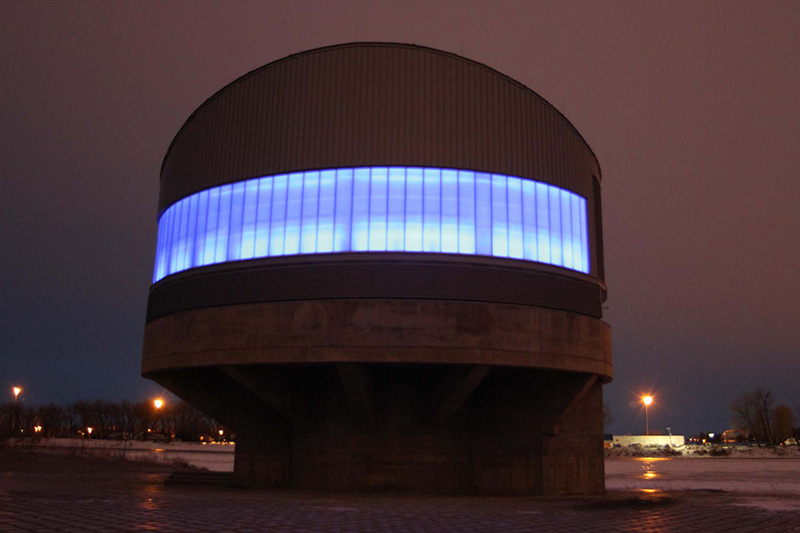HORIZONTAL COLLECTOR WELL
Bismarck, North DakotaAbout the Project
The City of Bismarck operated a conventional intake on the Missouri River for its 30 MGD Water Treatment Plant (WTP). Routinely, sediment from the river was drawn into the plant, creating operational and maintenance problems, and causing excessive wear on pumps and process equipment.Additionally, over the past several decades, intake reliability has been threatened as sandbars migrate in and out of the area and potentially limit raw water from entering the WTP.
Project Details
Date: 2003 – 2014
Client: City of Bismarck
Key Project Elements
- Evaluation of HCW on Missouri River near proposed project location
- Understanding of area hydrogeology
- Teaming with Layne (Ranney Collector Wells)
- River bank filtration investigation
- Landowner permissions for drilling access
In 1996, the City of Bismarck retained AE2S to complete a Master Plan Update (MPU) for the WTP. Pursuant to the recommendations from the MPU, the City of Bismarck again enlisted AE2S to complete a preliminary investigation of utilizing horizontal collector well technology for the planned intake replacement at the WTP.
The replacement of the existing Bismarck WTP intake represents the initial capacity-driven improvement for the facility, and the culmination of optimization improvements implemented during the first five years following the completion of the MPU.
Phase II included field borings and preliminary testing in the areas identified in Phase I as having the highest potential for successfully installing a horizontal collector well. Phase III activities included detailed field and laboratory testing of the Phase II site found to have the most favorable conditions to verify and confirm the hydraulic connection between the river and the aquifer, and gather sufficient data upon which to base and develop conceptual design elements.
Phase IV included a final report that summarized all previous phases, including estimates of capacity and water quality, and conceptual design elements with cost opinions. The design and construction of the facility also followed a phased approach. Phase I of the HCW included the underground caisson and laterals.
The completion of Phase I was marked by a pump test for the actual capacity of the system in August 2010. Phase II included a one-mile raw water transmission pipe from the HCW to the WTP site and was completed in 2013. Phase III concluded the project with the construction of the above-grade superstructure and included a pump system with 1,700 total installed horsepower with the ability to pump 5 to 30 MGD. The HCW was placed into operation in the fall of 2014.
The replacement of the existing Bismarck WTP intake represents the initial capacity-driven improvement for the facility, and the culmination of optimization improvements implemented during the first five years following the completion of the MPU.
Phased Approach Ensures Efficiency
The investigation was undertaken in a four-phase process to provide flexibility and potentially minimize investigative costs if unfavorable geologic conditions were found. Phase I was the completion of a “desktop” evaluation of the available geologic, aquifer, and site information to initially assess the potential to develop the required yield and quality (ultimately 50 MGD) utilizing horizontal collector well technology.Phase II included field borings and preliminary testing in the areas identified in Phase I as having the highest potential for successfully installing a horizontal collector well. Phase III activities included detailed field and laboratory testing of the Phase II site found to have the most favorable conditions to verify and confirm the hydraulic connection between the river and the aquifer, and gather sufficient data upon which to base and develop conceptual design elements.
Phase IV included a final report that summarized all previous phases, including estimates of capacity and water quality, and conceptual design elements with cost opinions. The design and construction of the facility also followed a phased approach. Phase I of the HCW included the underground caisson and laterals.
The completion of Phase I was marked by a pump test for the actual capacity of the system in August 2010. Phase II included a one-mile raw water transmission pipe from the HCW to the WTP site and was completed in 2013. Phase III concluded the project with the construction of the above-grade superstructure and included a pump system with 1,700 total installed horsepower with the ability to pump 5 to 30 MGD. The HCW was placed into operation in the fall of 2014.
Multiple Benefits
The successful implementation of the horizontal collector well technology eliminated variations in the raw water quality and the future need for expanded pretreatment at the Bismarck WTP.In addition, the horizontal collector well (riverbank filtration) also provided regulatory benefits in the form of “bank filtration” to provide removal credits for water borne micro-organism such as cryptosporidium.








